Business
Gen Alpha kids are spending big money on skin care. Some adults are concerned
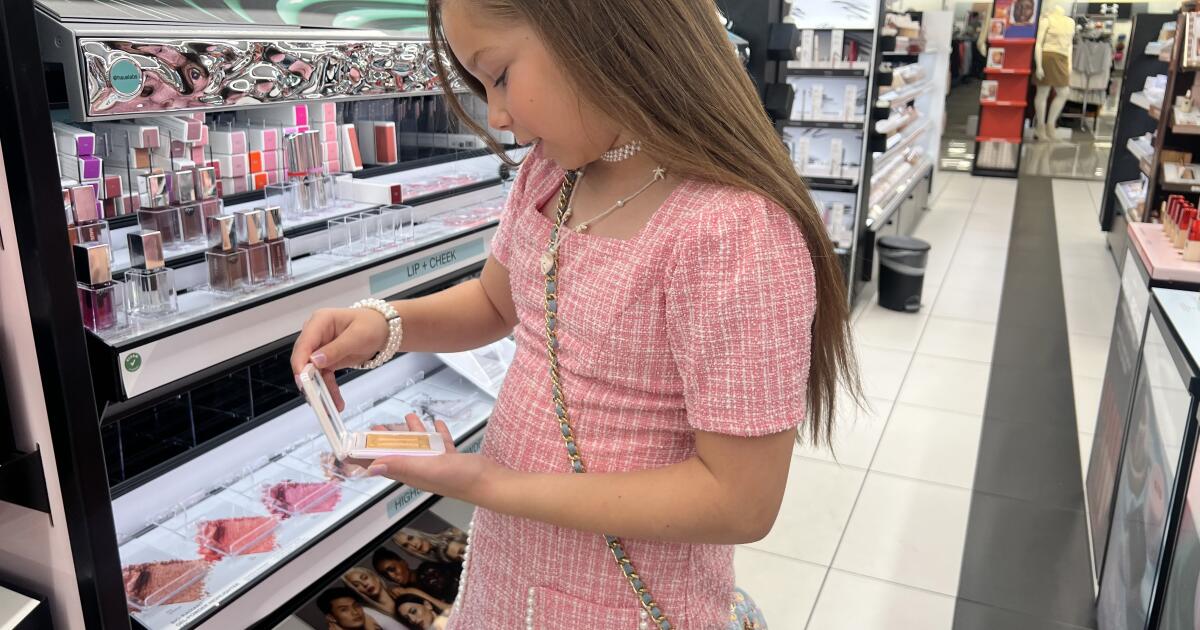
Fourth grader Naiya White knows what you think about her twice-daily beauty regimen and her Sephora shopping trips.
“I heard all you guys were freaking out about 10-year-olds using skin care,” she says in a TikTok video posted last month, standing outside a Sephora store in Grand Junction, Colo. “So let’s go pick some out!”
Moments later, White is making her way down the hot pink Glow Recipe aisle in an oversize Lilo & Stitch T-shirt and sparkly green eyeliner, ticking off her favorite products in rapid succession.
“I’d recommend this avocado cleanser; it’s nourishing and gentle,” she says, holding up a $28 tube of face wash. “The mist is also a yes — it makes your skin look super glowy and it’s hydrating. This moisturizer is also one of my favorites and it smells delicious. The hyaluronic Plum Plump balm is a great sleep mask for lips.”
In conclusion, she says with more than a hint of sass, “For all the cranky, musty, dusty adults out there who think little kids shouldn’t be using skin care … get it together!”
Naiya, 10, is part of a fast-growing army of preteens who are swarming into beauty stores around the country and buying up cleansers, moisturizers, toners, face masks and, in some cases, potent anti-wrinkle serums, exfoliants and peels that are intended to slow the aging process in much older consumers. They’re showing off their multi-hundred-dollar hauls and elaborate morning and nighttime routines on TikTok, where the catchphrase “Sephora Kids” has been hashtagged more than 11,000 times.
The obsession with skin care among Gen Alpha — typically defined as those born between 2010 and 2024 — is leading to a windfall of unexpected business for the booming $164-billion global skin-care industry, which historically has targeted women, not girls. But cosmetics brands and the retailers that carry their products are facing a delicate balancing act as they navigate the phenomenon and figure out how to market to a growing cohort of impressionable customers.
“I don’t want to see younger kids using active ingredients, using exfoliating products, because it’s just not necessary,” said Shai Eisenman, founder and chief executive of Bubble, one of the skin-care lines most coveted by Gen Z and Gen Alpha consumers. “We have a responsibility as a brand, and that responsibility is not to sell as many products as possible.”
Gea Gueron, a sales associate at Larchmont Beauty Center, helps a young customer look at products.
(Carlin Stiehl / For The Times)
In June, cosmetics chain Ulta Beauty released an analysis of customer data that showed members of Gen Alpha become interested in beauty much earlier than their predecessors.
“While Gen Z females started experimenting with beauty products and services around age 13, Gen Alpha is eclipsing them by five years — starting at the average age of 8 for females and males,” the report said. “They also start more concretely defining what beauty means to them around the age of 11.”
The burgeoning skin-care trend, which Ulta Beauty began noticing in the last year, is “driven by the rise of new skincare rituals and trending products on TikTok,” a spokesperson said in a statement, adding that Gen Alpha overwhelmingly views skin care as a form of self-care and wellness.
Skin-care mania has divided millennial parents, many of whom grew up washing their faces in the shower with a bar of soap — if at all — and now are baffled by the multistep get-ready-with-me videos that their children are diligently following on social media.
Any video Naiya and I make at Sephora or Ulta, people have something to say. But I feel like a lot of adults forget what it’s like to be a child.
— Ashley Paige, Naiya White’s mom
Dermatologists and estheticians say the unease is more than just the usual hand-wringing of an older generation. They worry “skinfluencers” are pushing children to splurge on products that in some cases could cause damage to sensitive young skin, and are concerned the craze is kick-starting an unhealthy fixation with physical appearance.
“A lot of tweens and teens are now using anti-aging products, so they’re starting way too young,” said Dr. Carol Cheng, a pediatric dermatologist and an assistant clinical professor of dermatology at UCLA. In recent months, she has seen some patients arrive for their appointments with “bags of products to make sure they’re optimizing what they’re doing.”
“They’re using things like vitamin C serums, salicylic acid, really expensive products that have actives that can actually harm their skin,” Cheng said, referring to active ingredients meant to address specific conditions such as wrinkles and dark spots. Such harsh chemicals, she added, can cause irritation, redness, burning, peeling and stinging.
At CatEye Beauty Skincare, a boutique day spa in San Diego, girls are bringing in pictures of Korean women with so-called glass skin — a Korean beauty trend that refers to a clear and luminous complexion — and saying, “I want my skin to look like this,” owner Catherine Noel said.
“I’ve had a couple girls come in with very wealthy parents and they wanted a pumpkin peel on their perfect face,” she said. “That would be something for a 35-year-old woman, not somebody who’s 12.”
Amid reports and videos of unsupervised Sephora Kids descending upon the stores en masse, wreaking havoc on product testers and harassing employees, longtime shoppers have taken to the retailer’s online community page to post complaints, including one thread proposing a ban on customers under 16.
“I know that Sephora has basically become the new Claire’s for kids, and buying Drunk Elephant products that are full of actives and retinoids that are harmful to [kids’] skin is the latest Gen Alpha trend, but the testers are getting destroyed,” one customer wrote. “Everything from kids mixing skincare and makeup testers together to make ‘smoothies’ to opening new makeup packages and using them.”
The backlash hasn’t stopped Ashley Paige, Naiya White’s mom, from taking her to Sephora and Ulta Beauty a couple of times a month and filming their excursions for the more than 40,000 people who follow their joint TikTok page, @sparkleandchaos.
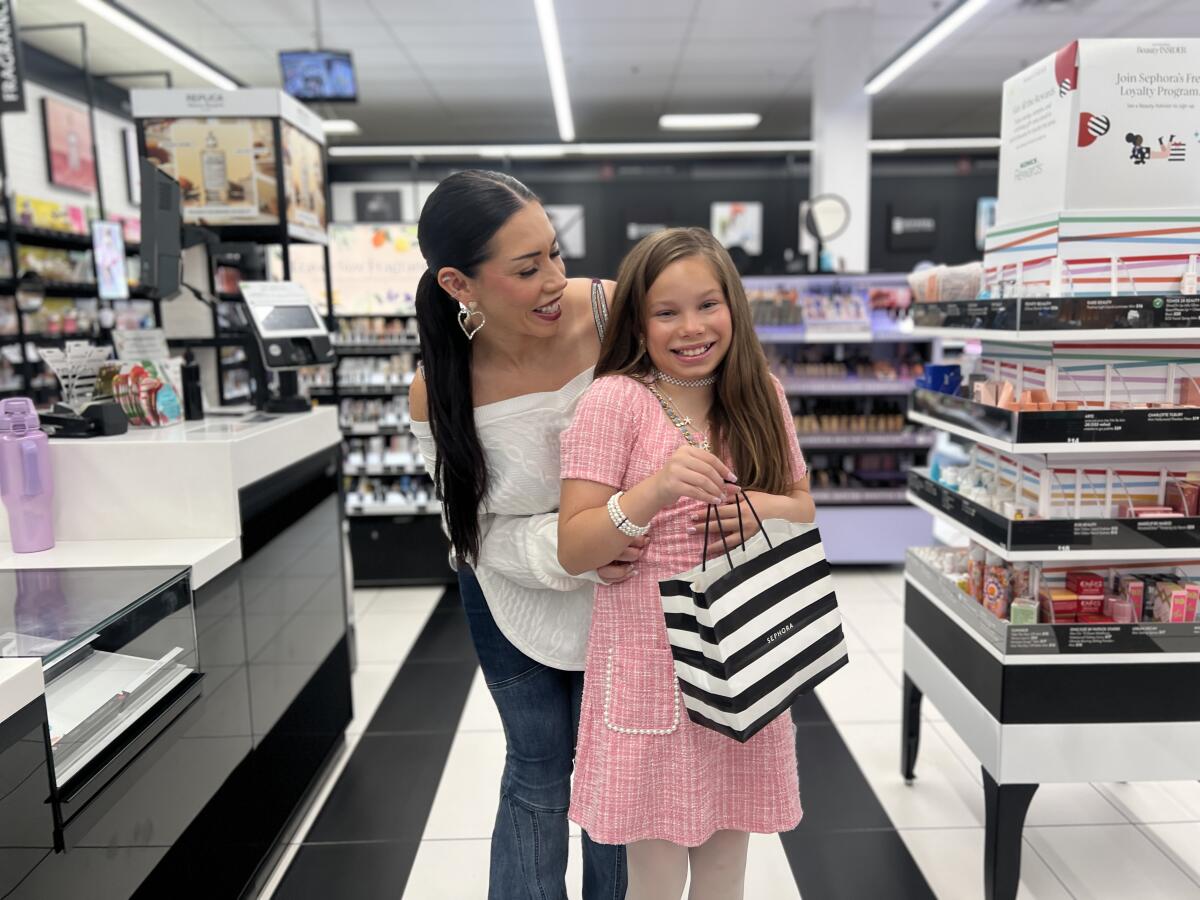
Ashley Paige, 37, left, and her daughter, 10-year-old Naiya White, at a Sephora store.
(Courtesy of Ashley Paige)
“Any video Naiya and I make at Sephora or Ulta, people have something to say,” Paige, 37, said in an interview with The Times. “But I feel like a lot of adults forget what it’s like to be a child.”
The duo’s first video, posted in January, addressed the backlash head-on, with Naiya instructing fellow Sephora Kids on how to behave politely in the stores.
“I heard they were about to ban testers because of us — that is not OK. Girls, clean up after yourselves,” she says in the video, which has been viewed more than 6 million times. “You need to be polite to all the people who work here, OK? You want a good rep, not a bad one.”
Industry professionals say an early introduction to skin care can be a positive thing if messaged correctly.
They’re steering young skin-care enthusiasts away from products with active ingredients and focusing instead on a minimalist approach centered on helping them develop healthy daily habits. The three basics, they say, are appropriate for any age: a gentle cleanser, a hydrating moisturizer and a good sunscreen.
That’s generally the protocol that Naiya follows, albeit with some extra steps.
“In the morning, I like to use my Bubble face wash and my Bubble Cloud Surf moisturizer and my Bubble tinted sunscreen,” Naiya said. Bubble launched in 2020 as a Gen Z-oriented brand with eye-catching packaging in vibrant colors and bold fonts, and quickly caught on with preteens as well.
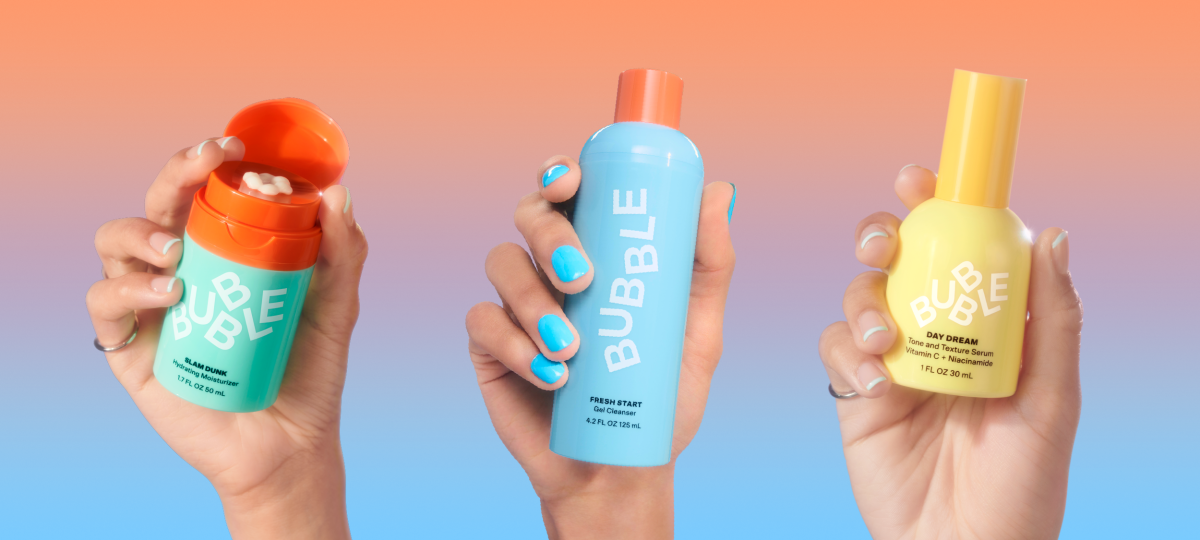
“We don’t think anyone under 13 needs anything other than sunscreen, cleanser and moisturizer,” Bubble CEO Shai Eisenman says.
(Bubble)
“At night is when I use my Evereden kids multivitamin face wash and Evereden kids multivitamin face cream — it smells floral-y,” Naiya continued. “Sometimes I use toner. I also use the Aquaphor balm under my eyes to help with puffiness and stuff.”
Gen Alpha already wields significant spending power and is expected to become an economic force in the coming years. Companies of all kinds are developing new products to appeal to the demographic, which is growing rapidly with more than 2.8 million children born globally every week. By the end of the year, they will number nearly 2 billion — the largest generation ever, according to McCrindle Research, which is credited with coining the term.
Ulta Beauty, which operates more than 1,400 stores in all 50 states, said that in response to greater interest among Gen Alpha, it has “expanded our offerings to include simplified, dermatologist-approved products designed for younger skin.” In its most recent fiscal year, total sales increased 9.8% to $11.2 billion, with skin care accounting for 19% of company revenue, up from 17% the year prior.
“We do not proactively promote skin care to Gen Alpha,” a spokesperson said. “As more younger shoppers engage with us, we focus on guiding them — and their parents — toward informed choices” including educational resources, ingredient-based guidance and age-specific training for store associates.
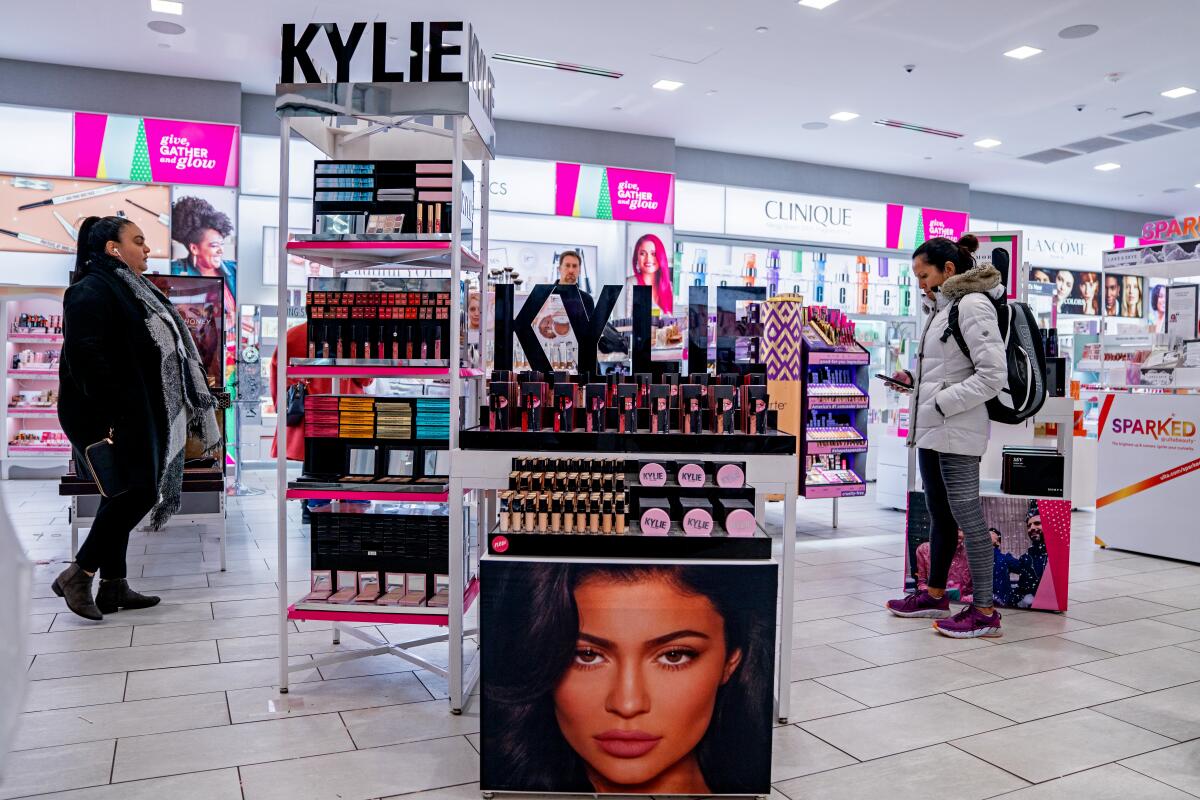
An Ulta Beauty store in New York City. The cosmetics retailer released an analysis of customer data this summer that showed members of Gen Alpha become interested in beauty much earlier than their predecessors — starting at the average age of 8.
(David Dee Delgado/Getty Images)
That said, beauty companies are routinely teaming up with entertainment brands and toy makers to release kid-friendly limited-edition collections.
Ulta Beauty on Sunday launched two partnerships: an assortment of makeup, skin-care and hair-care items tied to the November release of Universal Pictures’ movie musical “Wicked,” as well as a separate collection with Mini Brands, featuring tiny $9.99 replicas of many of the chain’s bestselling products.
“All your favorite beauty brands are now cuter and more collectible than ever with Mini Brands x Ulta Beauty!” the retailer’s website says. “With over 68 different minis to collect, every unboxing is a fun surprise!”
Bubble used similar playful language in its recent rollout of Bubble Charms, “the CUTEST way to accessorize your Tell All Lip Balm.” The lip balm “comes with an adorbz keychain” and “will make your crush text u back,” the company says on its website.
In May, Bubble announced a collaboration with Pixar tied to the release of “Inside Out 2,” an animated film about the roiling emotions of puberty that grossed $1.6 billion worldwide at the box office. The products included in the limited-edition Pixar collection were safe for all ages, Eisenman said.
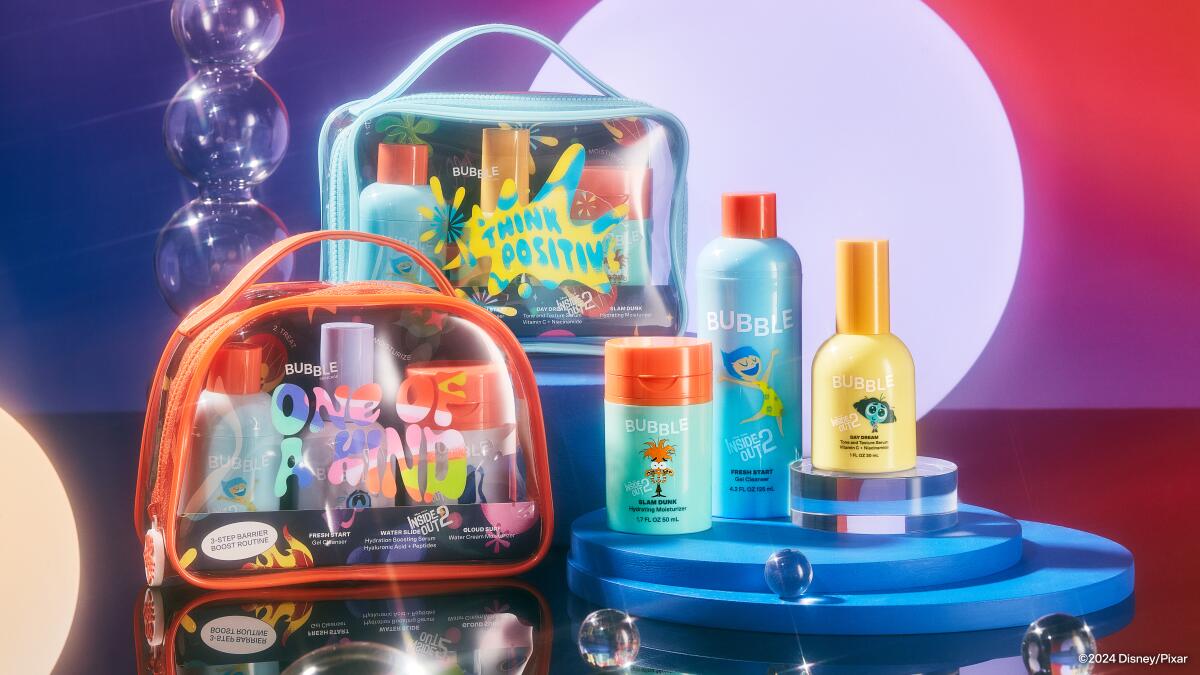
Bubble, a skin-care line beloved by Gen Z and Gen Alpha, launched in 2020. It recently partnered with Pixar on a product collaboration for the release of “Inside Out 2.”
(Bubble)
Today Bubble has about 50,000 brand ambassadors who help promote the company, participate in its product testing program and receive special discounts and freebies; 20,000 of them are 13 to 18 years old. On Bubble’s website and social media posts, the company routinely highlights which products and practices are suitable for kids.
“Just cuz you saw it on TikTok doesn’t mean it’s right for your face!” reads the caption in a Bubble Instagram post this year that featured a three-step skin-care routine for customers under 13. “Great skincare can be super simple.”
“A lot of younger kids are using products that are inappropriate,” Eisenman said. “For us, one of the most important elements is to be a good force and an educating source in this space.”
I’ve had a couple girls come in with very wealthy parents and they wanted a pumpkin peel on their perfect face. That would be something for a 35-year-old woman, not somebody who’s 12.
— Catherine Noel, owner of CatEye Beauty Skincare
At CatEye Beauty, owner Noel added a “teen facial with skincare lesson” to her list of services in March. The $120, 45-minute treatment is designed for people 11 to 15 years old and includes a double cleanse, mild exfoliation and, if necessary, extractions to clear out clogged pores.
“They still have baby skin,” she said. “I don’t like this trend of young girls coming in and using very expensive products, especially since they’re made for adults.”
Gen Alpha’s love of skin care is even prompting consternation among Gen Z.
At Larchmont Beauty Center on a recent Friday afternoon, eighth grader Maren and her friend, Shiri, stopped in to pick up a pack of hair bands. The two are on the border of Gen Z and Gen Alpha, but consider themselves members of the older generation.
“Our generation is a lot more chill,” she said. “I feel like millennials are full-face and we’re just like, some makeup. And then the people younger than us are like: skin care.”
Calling the trend “a little freaky,” 14-year-old Maren said she knows of kids “who are like 9, and they’re doing the same stuff I’m doing.”
“It’s insane that like a 9-year-old who has perfect skin is doing a 12-step skin-care routine.”

Business
Commentary: Yes, California should tax billionaires’ wealth. Here’s why

That shrill, high-pitched squeal you’ve been hearing lately? Don’t bother trying to adjust your TV or headphones, or calling your doctor for a tinnitis check. It’s just America’s beleaguered billionaires keening over a proposal in California to impose a one-time wealth tax of up to 5% on fortunes of more than $1 billion.
The billionaires lobby has been hitting social media in force to decry the proposed voter initiative, which has only started down the path toward an appearance on November’s state ballot. Supporters say it could raise $100 billion over five years, to be spent mostly on public education, food assistance and California’s medicaid program, which face severe cutbacks thanks to federal budget-cutting.
As my colleagues Seema Mehta and Caroline Petrow-Cohen report, the measure has the potential to become a political flash point.
The rich will scream The pundits and editorial-board writers will warn of dire consequences…a stock market crash, a depression, unemployment, and so on. Notice that the people making such objections would have something personal to lose.
— Donald Trump advocating a wealth tax, in 2000
Its well-heeled critics include Jessie Powell, co-founder of the Bay Area-based crypto exchange platform Kraken, who warned on X that billionaires would flee the state, taking with them “all of their spending, hobbies, philanthropy and jobs.”
Venture investor Chamath Palihapitiya claimed on X that “$500 billion in wealth has already fled the state” but didn’t name names. San Francisco venture investor Ron Conway has seeded the opposition coffers with a $100,000 contribution. And billionaire Peter Thiel disclosed on Dec. 31 that he has opened a new office in Miami, in a state that not only has no wealth tax but no income tax.
Already Gov. Gavin Newsom, a likely candidate for the Democratic nomination for president, has warned against the tax, arguing that it’s impractical for one state to go it alone when the wealthy can pick up and move to any other state to evade it.
On the other hand. Rep. Ro Khanna (D-Fremont), usually an ally of Silicon Valley entrepreneurs, supports the measure: “It’s a matter of values,” he posted on X. “We believe billionaires can pay a modest wealth tax so working-class Californians have Medicaid.”
Not every billionaire has decried the wealth tax idea. Jensen Huang, the CEO of the soaring AI chip company Nvidia — and whose estimated net worth is more than $160 billion — expressed indifference about the California proposal during an interview with Bloomberg on Tuesday.
“We chose to live in Silicon Valley and whatever taxes, I guess, they would like to apply, so be it,” he said. “I’m perfectly fine with it. It never crossed my mind once.”
And in 2000, another plutocrat well known to Americans proposed a one-time tax of 14.25% on taxpayers with a net worth of $10 million or more. That was Donald Trump, in a book-length campaign manifesto titled “The America We Deserve.”
“The rich will scream,” Trump predicted. “The pundits and editorial-board writers will warn of dire consequences … a stock market crash, a depression, unemployment, and so on. Notice that the people making such objections would have something personal to lose.” (Thanks due to Tim Noah of the New Republic for unearthing this gem.)
Trump’s book appeared while he was contemplating his first presidential campaign, in which he presented himself as a defender of the ordinary American. His ghostwriter, Dave Shiflett, later confessed that he regarded the book as “my first published work of fiction.”
All that said, let’s take a closer look at the proposed initiative and its backers’ motivation. It’s gaining nationwide attention because California has more billionaires than any other state.
The California measure’s principal sponsor, the Service Employees International Union, and its allies will have to gather nearly 875,000 signatures of registered voters by June 24 to reach the ballot. The opposition is gearing up behind the catchphrase “Stop the Squeeze” — an odd choice for a rallying cry, since it’s hard to imagine the average voter getting all het up about multibillionaires getting squoze.
The measure would exempt directly held real estate, pensions and retirement accounts from the calculation of net worth. The tax can be paid over five years (with a fee charged for deferrals). It applies to billionaires residing in California as of Jan. 1, 2026; their net worth would be assessed as of Dec. 31 this year. The measure’s drafters estimate that about 200 of the wealthiest California households would be subject to the tax.
The initiative is explicitly designed to claw back some of the tax breaks that billionaires received from the recent budget bill passed by the Republican-dominated Congress and signed on July 4 by President Trump. The so-called One Big Beautiful Bill Act will funnel as much as $1 trillion in tax benefits to the wealthy over the next decade, while blowing a hole in state and local budgets for healthcare and other needs.
California will lose about $19 billion a year for Medi-Cal alone. According to the measure’s drafters, that could mean the loss of Medi-Cal coverage for as many as 1.6 million Californians. Even those who retain their eligibility will have to pay more out of pocket due to provisions in the budget bill.
The measure’s critics observe that wealth taxes have had something of a checkered history worldwide, although they often paint a more dire picture than the record reflects. Twelve European countries imposed broad-based wealth taxes as recently as 1995, but these have been repealed by eight of them.
According to the Tax Foundation Europe, that leaves wealth taxes in effect only in Colombia, Norway, Spain and Switzerland. But that’s not exactly correct. Wealth taxes still exist in France and Italy, where they’re applied there to real estate as property taxes, and in Belgium, where they’re levied on securities accounts valued at more than 1 million euros, or about $1.16 million.
Switzerland’s wealth tax is by far the oldest, having been enacted in 1840. It’s levied annually by individual cantons on all residents, at rates reaching up to about 1% of net worth, after deductions and exclusions for certain categories of assets.
The European countries that repealed their wealth taxes did so for varied reasons. Most were responding at least partially to special pleading by the wealthy, who threatened to relocate to friendlier jurisdictions in a continent-wide low-tax contest.
That’s the principal threat raised by opponents of the California proposal. But there are grounds to question whether the effect would be so stark. For one thing, notes UC Berkeley economist Gabriel Zucman, an advocate of wealth taxes generally, “it has become impossible to avoid the tax by leaving the state.” Billionaires who hadn’t already established residency elsewhere by Jan. 1 this year have missed a crucial deadline.
The initiative’s drafters question the assumption that millionaires invariably move from high- to low-tax jurisdictions, citing several studies, including one from 2016 based on IRS statistics showing that elites are generally unwilling to move to exploit tax advantages across state lines.
As for the argument that billionaires could avoid the tax by moving assets out of the state, “the location of the assets doesn’t matter,” Zucman told me by email. “Taxpayers would be liable for the tax on their worldwide assets.”
One issue raised by the burgeoning controversy over the California proposal is how to extract a fair share of public revenue from plutocrats, whose wealth has surged higher while their effective tax rates have declined to historically low levels.
There can be no doubt that in tax terms, America’s wealthiest families make out like bandits. The total effective tax rate of the 400 richest U.S. households, according to an analysis by Zucman, his UC Berkeley colleague Emmanuel Saez, and their co-authors, “averaged 24% in 2018-2020 compared with 30% for the full population and 45% for top labor income earners.” This is largely due to the preferences granted by the federal capital gains tax, which is levied only when a taxable asset is sold and even then at a lower rate than the rate on wage income.
The late tax expert at USC, Ed Kleinbard, used to describe the capital gains tax as our only voluntary tax, since wealthy families can avoid selling their stocks and bonds indefinitely but can borrow against them, tax-free, for funds to live on; if they die before selling, the imputed value of their holdings is “stepped up” to their value at their passing, extinguishing forever what could be decades of embedded tax liabilities. (The practice has been labeled “buy, borrow, die.”)
Californians have recently voted to redress the increasing inequality of our tax system. Voters approved what was dubbed a “millionaires tax” in 2012, imposing a surcharge of 1% to 3% on incomes over $263,000 (for joint filers, $526,000). In 2016, voters extended the surcharge to 2030 from the original phase-out date of 2016. That measure passed overwhelmingly, by a 2-to-1 majority, easily surpassing that of the original initiative.
But it may be that California’s ability to tax billionaires’ income has been pretty much tapped out. Some have argued that one way to obtain more revenue from wealthy households is to eliminate any preferential rate on capital gains and other investment income, but that’s not an option for California, since the state doesn’t offer a preferential tax rate on that income, unlike the federal government and many other states. The unearned income is taxed at the same rate as wages.
One virtue of the California proposal is that, even if it fails to get enacted or even to reach the ballot, it may trigger more discussion of options for taxing plutocratic fortunes. One suggestion came from hedge fund operator Bill Ackman, who reviled the California proposal on X as “an expropriation of private property” (though he’s not a California resident himself), but acknowledged that “one shouldn’t be able to live and spend like a billionaire and pay no tax.”
Ackman’s idea is to make loans backed by stock holdings taxable, “as if you sold the same dollar amount of stock as the loan amount.” That would eliminate the free ride that investors can enjoy by borrowing against their holdings.
The debate over the California wealth tax may well hinge on delving into plutocrat psychology. Will they just pay the bill, as Huang implies would be his choice? Or relocate from California out of pique?
California is still a magnet for the ambitious entrepreneur, and the drafters of the initiative have tried to preserve its allure. Those who come into the state after Jan. 1 to pursue their ambitious dreams of entrepreneurship would be exempt, as would residents whose billion-dollar fortunes came after that date. There may be better ways for California to capture more revenue from the state’s population of multibillionaires, but a one-time limited tax seems, at this moment, to be as good as any.
Business
Google and Character.AI to settle lawsuits alleging chatbots harmed teens

Google and Character.AI, a California startup, have agreed to settle several lawsuits that allege artificial intelligence-powered chatbots harmed the mental health of teenagers.
Court documents filed this week show that the companies are finalizing settlements in lawsuits in which families accused them of not putting in enough safeguards before publicly releasing AI chatbots. Families in multiple states including Colorado, Florida, Texas and New York sued the companies.
Character.AI declined to comment on the settlements. Google didn’t immediately respond to a request for comment.
The settlements are the latest development in what has become a big issue for major tech companies as they release AI-powered products.
Suicide prevention and crisis counseling resources
If you or someone you know is struggling with suicidal thoughts, seek help from a professional and call 9-8-8. The United States’ first nationwide three-digit mental health crisis hotline 988 will connect callers with trained mental health counselors. Text “HOME” to 741741 in the U.S. and Canada to reach the Crisis Text Line.
Last year, California parents sued ChatGPT maker OpenAI after their son Adam Raine died by suicide. ChatGPT, the lawsuit alleged, provided information about suicide methods, including the one the teen used to kill himself. OpenAI has said it takes safety seriously and rolled out new parental controls on ChatGPT.
The lawsuits have spurred more scrutiny from parents, child safety advocates and lawmakers, including in California, who passed new laws last year aimed at making chatbots safer. Teens are increasingly using chatbots both at school and at home, but some have spilled some of their darkest thoughts to virtual characters.
“We cannot allow AI companies to put the lives of other children in danger. We’re pleased to see these families, some of whom have suffered the ultimate loss, receive some small measure of justice,” said Haley Hinkle, policy counsel for Fairplay, a nonprofit dedicated to helping children, in a statement. “But we must not view this settlement as an ending. We have only just begun to see the harm that AI will cause to children if it remains unregulated.”
One of the most high-profile lawsuits involved Florida mom Megan Garcia, who sued Character.AI as well as Google and its parent company, Alphabet, in 2024 after her 14-year-old son, Sewell Setzer III, took his own life.
The teenager started talking to chatbots on Character.AI, where people can create virtual characters based on fictional or real people. He felt like he had fallen in love with a chatbot named after Daenerys Targaryen, a main character from the “Game of Thrones” television series, according to the lawsuit.
Garcia alleged in the lawsuit that various chatbots her son was talking to harmed his mental health, and Character.AI failed to notify her or offer help when he expressed suicidal thoughts.
“The Parties request that this matter be stayed so that the Parties may draft, finalize, and execute formal settlement documents,” according to a notice filed on Wednesday in a federal court in Florida.
Parents also sued Google and its parent company because Character.AI founders Noam Shazeer and Daniel De Freitas have ties to the search giant. After leaving and co-founding Character.AI in Menlo Park, Calif., both rejoined Google’s AI unit.
Google has previously said that Character.AI is a separate company and the search giant never “had a role in designing or managing their AI model or technologies” or used them in its products.
Character.AI has more than 20 million monthly active users. Last year, the company named a new chief executive and said it would ban users under 18 from having “open-ended” conversations with its chatbots and is working on a new experience for young people.
Business
Warner nixes Paramount’s bid (again), citing proposed debt load
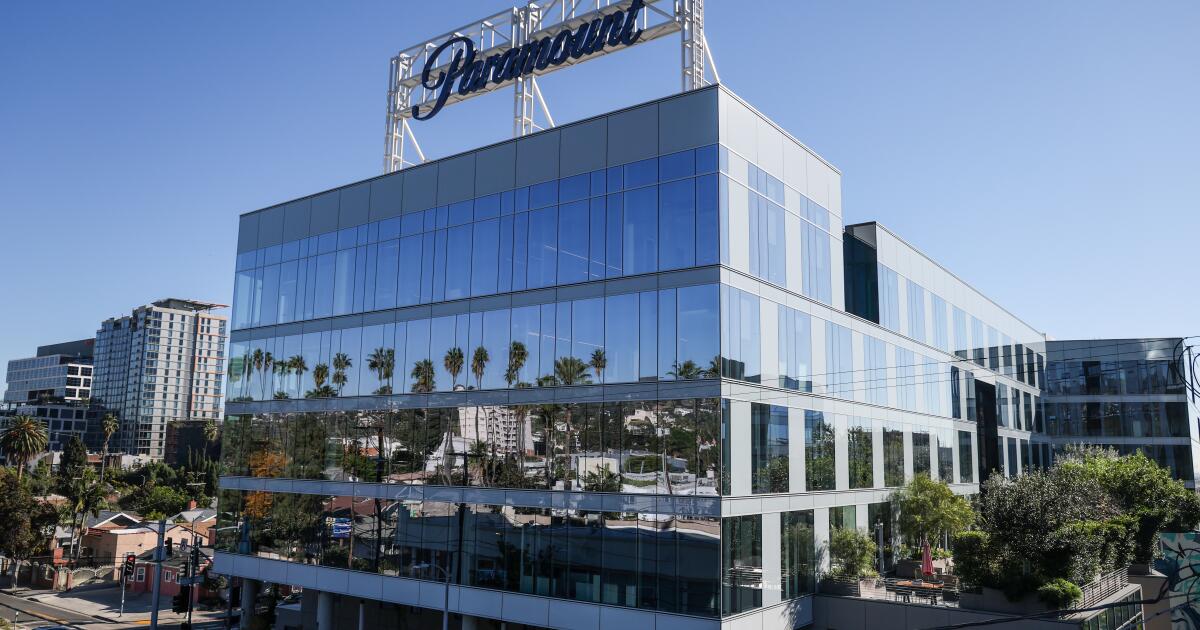
Paramount’s campaign to acquire Warner Bros. Discovery was dealt another blow Wednesday after Warner’s board rejected a revised bid from the company.
The board cited the enormous debt load that Paramount would need to finance its proposed $108-billion takeover.
Warner’s board this week unanimously voted against Paramount’s most recent hostile offer — despite tech billionaire Larry Ellison agreeing in late December to personally guarantee the equity portion of Paramount’s bid. Members were not swayed, concluding the bid backed by Ellison and Middle Eastern royal families was not in the best interest of the company or its shareholders.
Warner’s board pointed to its signed agreement with Netflix, saying the streaming giant’s offer to buy the Warner studios and HBO was solid.
The move marked the sixth time Warner’s board has said no to Paramount since Ellison’s son, Paramount Chief Executive David Ellison, first expressed interest in buying the larger entertainment company in September.
In a Wednesday letter to investors, Warner board members wrote that Paramount Skydance has a market value of $14 billion. However, the firm is “attempting an acquisition requiring $94.65 billion of [debt and equity] financing, nearly seven times its total market capitalization.”
The structure of Paramount’s proposal was akin to a leveraged buyout, Warner said, adding that if Paramount was to pull it off, the deal would rank as the largest leveraged buyout in U.S. history.
“The extraordinary amount of debt financing as well as other terms of the PSKY offer heighten the risk of failure to close, particularly when compared to the certainty of the Netflix merger,” the Warner board said, reiterating a stance that its shareholders should stick to its preferred alternative to sell much of the company to Netflix.
The move puts pressure on Paramount to shore up its financing or boost its cash offer above $30 a share.
However, raising its bid without increasing the equity component would only add to the amount of debt that Paramount would need to buy HBO, CNN, TBS, Animal Planet and the Burbank-based Warner Bros. movie and television studios.
Paramount representatives were not immediately available for comment.
“There is still a path for Paramount to outbid Netflix with a substantially higher bid, but it will require an overhaul of their current bid,” Lightshed Partners media analyst Rich Greenfield wrote in a Wednesday note to investors. Paramount would need “a dramatic increase in the cash invested from the Ellison family and/or their friends and financing partners.”
Warner Bros. Discovery’s shares held steady around $28.55. Paramount Skydance ticked down less than 1% to $12.44.
Netflix has fallen 17% to about $90 a share since early December, when it submitted its winning bid.
The jostling comes a month after Warner’s board unanimously agreed to sell much of the company to Netflix for $72 billion. The Warner board on Wednesday reaffirmed its support for the Netflix deal, which would hand a treasured Hollywood collection, including HBO, DC Comics and the Warner Bros. film studio, to the streaming giant. Netflix has offered $27.75 a share.
“By joining forces, we will offer audiences even more of the series and films they love — at home and in theaters — expand opportunities for creators, and help foster a dynamic, competitive, and thriving entertainment industry,” Netflix co-Chief Executives Ted Sarandos and Greg Peters said in a joint statement Wednesday.
After Warner struck the deal with Netflix on Dec. 4, Paramount turned hostile — making its appeal directly to Warner shareholders.
Paramount has asked Warner investors to sell their shares to Paramount, setting a Jan. 21 deadline for the tender offer.
Warner again recommended its shareholders disregard Paramount’s overtures.
Warner Bros.’ sale comes amid widespread retrenchment in the entertainment industry and could lead to further industry downsizing.
The Ellison family acquired Paramount’s controlling stake in August and quickly set out to place big bets, including striking a $7.7-billion deal for UFC fights. The company, which owns the CBS network, also cut more than 2,000 jobs.
Warner Bros. Discovery was formed in 2022 following phone giant AT&T’s sale of the company, then known as WarnerMedia, to the smaller cable programming company, Discovery.
To finance that $43-billion acquisition, Discovery took on considerable debt. Its leadership, including Chief Executive David Zaslav, spent nearly three years cutting staff and pulling the plug on projects to pay down debt.
Paramount would need to take on even more debt — more than $60 billion — to buy all of Warner Bros. Discovery, Warner said.
Warner has argued that it would incur nearly $5 billion in costs if it were to terminate its Netflix deal. The amount includes a $2.8-billion breakup fee that Warner would have to fork over to Netflix. Paramount hasn’t agreed to cover that amount.
Warner also has groused that other terms in Paramount’s proposal were problematic, making it difficult to refinance some of its debt while the transaction was pending.
Warner leaders say their shareholders should see greater value if the company is able to move forward with its planned spinoff of its cable channels, including CNN, into a separate company called Discovery Global later this year. That step is needed to set the stage for the Netflix transaction because the streaming giant has agreed to buy only the Warner Bros. film and television studios, HBO and the HBO Max streaming platform.
However, this month’s debut of Versant, comprising CNBC, MS NOW and other former Comcast channels, has clouded that forecast. During its first three days of trading, Versant stock has fallen more than 20%.
Warner’s board rebuffed three Paramount proposals before the board opened the bidding to other companies in late October.
Board members also rejected Paramount’s Dec. 4 all-cash offer of $30 a share. Two weeks later, it dismissed Paramount’s initial hostile proposal.
At the time, Warner registered its displeasure over the lack of clarity around Larry Ellison’s financial commitment to Paramount’s bid. Days later, Ellison agreed to personally guarantee $40.4 billion in equity financing that Paramount needs.
David Ellison has complained that Warner Bros. Discovery has not fairly considered his company’s bid, which he maintains is a more lucrative deal than Warner’s proposed sale to Netflix. Some investors may agree with Ellison’s assessment, in part, due to concerns that government regulators could thwart the Netflix deal out of concerns about the Los Gatos firm’s increasing dominance.
“Both potential mergers could severely harm the viewing public, creative industry workers, journalists, movie theaters that depend on studio content, and their surrounding main-street businesses, too,” Matt Wood, general counsel for consumer group Free Press Action, testified Wednesday during a congressional committee hearing.
“We fear either deal would reduce competition in streaming and adjacent markets, with fewer choices for consumers and fewer opportunities for writers, actors, directors, and production technicians,” Wood said. “Jobs will be lost. Stories will go untold.”
-

 Detroit, MI5 days ago
Detroit, MI5 days ago2 hospitalized after shooting on Lodge Freeway in Detroit
-

 Technology2 days ago
Technology2 days agoPower bank feature creep is out of control
-

 Dallas, TX4 days ago
Dallas, TX4 days agoDefensive coordinator candidates who could improve Cowboys’ brutal secondary in 2026
-

 Health5 days ago
Health5 days agoViral New Year reset routine is helping people adopt healthier habits
-

 Nebraska2 days ago
Nebraska2 days agoOregon State LB transfer Dexter Foster commits to Nebraska
-

 Iowa2 days ago
Iowa2 days agoPat McAfee praises Audi Crooks, plays hype song for Iowa State star
-

 Nebraska2 days ago
Nebraska2 days agoNebraska-based pizza chain Godfather’s Pizza is set to open a new location in Queen Creek
-

 Entertainment2 days ago
Entertainment2 days agoSpotify digs in on podcasts with new Hollywood studios
















